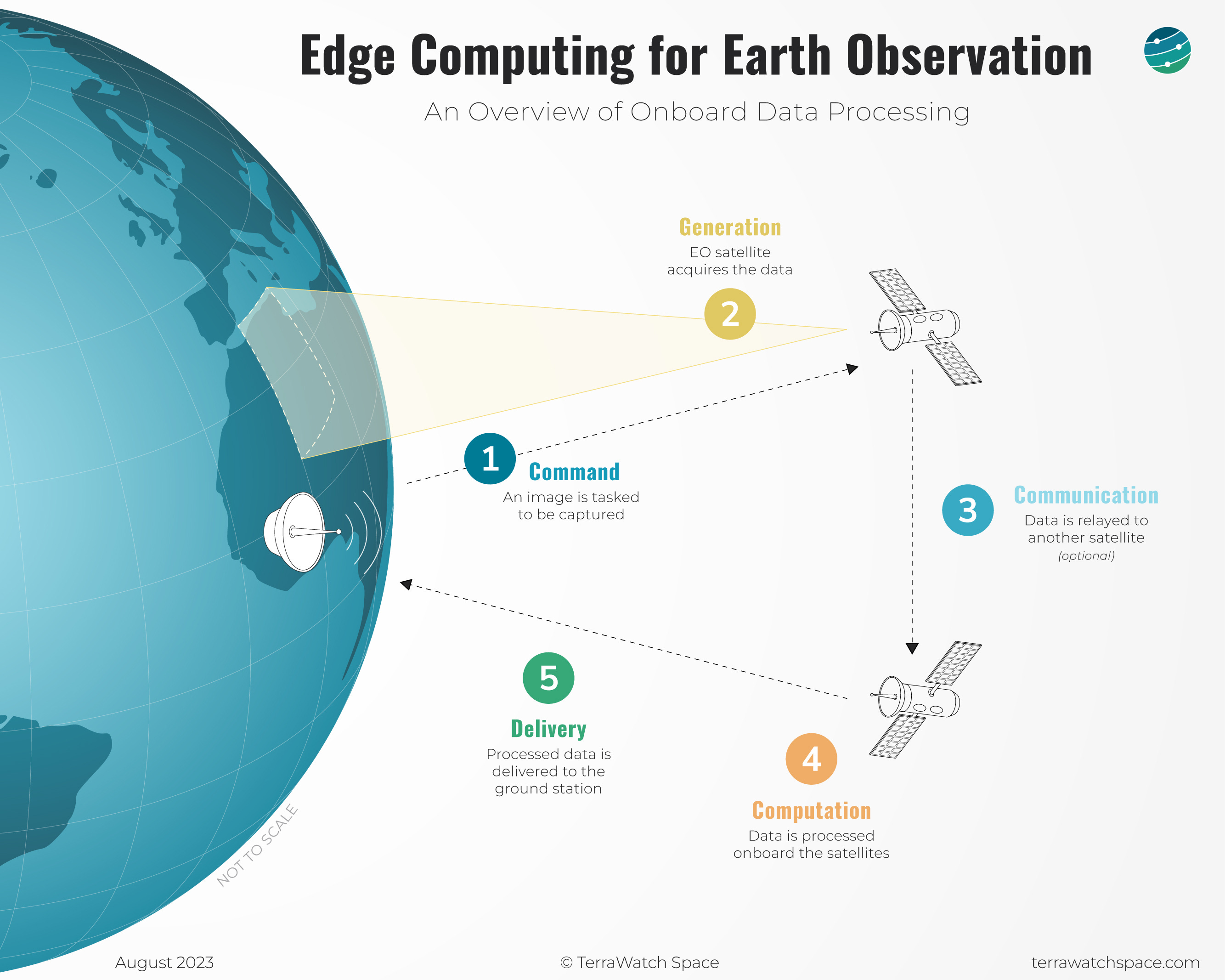To my premium subscribers, thank you for your support. It has given me enough financial cushion to take time to write deep-dive briefings such as this one while also letting me provide the weekly newsletter for free. The next planned deep dives are EO for Emission Monitoring (end of September) and EO for Carbon Monitoring (end of October).
For those of you who are not yet paid subscribers, this is a short preview if you would like to read more, please upgrade your subscription. In any case, you should continue to receive the weekly newsletter on Mondays, as usual.
Preamble
This deep dive is an attempt to demystify edge computing and its potential for the future of Earth observation (EO). The aim is not to get into the technical details of edge computing but to provide an overview for anyone who wants to understand this space better.
As you will see one important component of edge computing is inter-satellite links aka communication between satellites (whether that is through narrowband IoT or high-bandwidth connections). But, given the vastness of the topic, this piece will be all about edge computing aka on-board data processing, relevant for EO and how this space is evolving. There will be a specific deep dive on inter-satellite links for EO separately, sometime next year.
There are some suggested recommendations towards the end of the piece, in case you would like to go deeper into edge computing. But this is a rapidly changing market segment, so I might have to do another edition in a year. As always, let me know if you have feedback - I am sure this is the first of more editions to come on this subject!
Here is what we have in store for this deep dive:
Context: What is Edge Computing?
Edge Computing for Earth Observation
Edge Computing in the EO Value Chain
The Major Applications of Edge Computing
The Commercial Market Landscape
Key Trends: Edge Computing for EO
The So What: Why Edge Computing?
Context: What is Edge Computing?
Simply put, Edge Computing is about bringing data storage and processing closer to the source of the data (in our case the satellites). I will be honest, I am still not fully satisfied with why they decided to call it edge computing1, but I somehow weirdly think it makes sense. So, we are not going to try and find a better term.
Edge computing means having the ability to process data closer to where it’s being generated, enabling processing at greater speeds and volumes, leading to greater action-led results in real-time. It is not a new concept in any way2 as we see edge computing in action almost every day - smart speakers, smart watches, smart phones, point of sales systems, wearable medical devices, smart power grids etc.
One prominent use of edge computing is through the internet-of-things (IoT) networks, where data is collected and processed at the ‘edge’, rather than sending the data back to a data centre or cloud - as is the case with IoT sensors deployed in industrial facilities for continuous monitoring. Autonomous vehicles, on the other hand, are an interesting multi-sensor use case of edge computing where a vehicle driving down the road needs to collect real-time data about traffic, pedestrians, street signs etc. and process it at the edge (i.e. locally).
It has been a few lines and I haven’t mentioned the most used buzzword of our time - artificial intelligence. As you would imagine, ‘edge AI’ has a role to play if data needs to be collected and processed faster at the edge, particularly to process the data within a short timeframe enabling real-time results. There are fundamental differences to the traditional use of AI where the models run in the background fed by training data stored in the cloud, but with ‘edge AI’ the models need to be integrated within the device, with limited possibility of accessing external data. This brings its challenges, especially when that ‘edge’ happens to be ….. in space, but we will get to those in a bit.
An Overview of Edge Computing for Earth Observation
Within the realm of Earth Observation (EO), the advent of edge computing has really only happened in the past 5 years thanks to improved (and cheaper) access to space, miniaturization of satellites and satellite subsystems as well as the explosion of data collected by satellites.
Personally, I first got exposed to the phenomenon of edge computing when ESA announced the PhiSat mission in 2019, the first satellite to demonstrate using AI to process EO data in orbit. The mission showed the potential of AI as a tool for cloud detection onboard a hyperspectral imaging mission.
But, taking a step back, the figure below is a representation of how edge computing happens in EO - note that this is an attempt to provide a simple, yet holistic overview of the process of edge computing. The reality may be more complex than this, as you would see in some of the examples mentioned.







